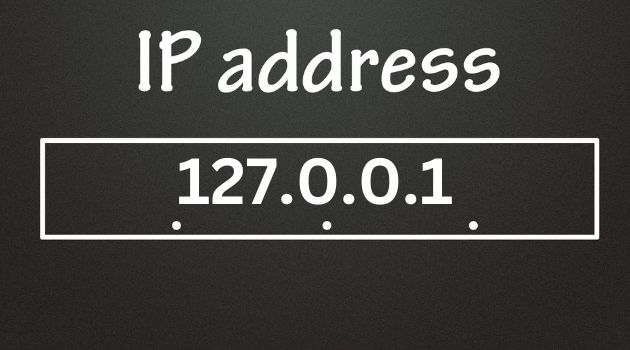In the world of networking, 127.0.0.1 and port numbers such as 49342 play crucial roles. But what do they really mean? And why are they important for developers and IT professionals? If you’ve stumbled upon 127.0.0.1:49342 and are curious about it, this guide will help you understand the basics of localhost, port numbers, and how they function together in network environments.
- What Does 127.0.0.1 Mean?
- What is a Port Number in Networking?
- Exploring 127.0.0.1 with Port 49342
- Practical Uses of 127.0.0.1:49342
- Security Aspects of Localhost and Ports
- How to Check if Port 49342 is Active?
- Can 127.0.0.1:49342 Cause Issues?
- Best Practices for Managing Localhost and Ports
- Troubleshooting Connection Errors Related to Ports
- Conclusion
- FAQs
What Does 127.0.0.1 Mean?
The Purpose of the Loopback Address
The IP address 127.0.0.1 is called the loopback address. It refers to your own computer, acting as a way for your machine to communicate with itself. Think of it as a self-reflection tool for your network – it’s like calling your own phone number to test if your line works.

How 127.0.0.1 Helps in Network Testing
This loopback address is essential for testing network services and applications. When you use 127.0.0.1, you ensure that any request sent stays within the computer without involving an external network. This helps developers check if applications work correctly on the local machine.
What is a Port Number in Networking?
Breaking Down Port Numbers
A port is a communication endpoint that ensures data is directed to the right program on a computer. Port numbers range from 0 to 65535, each representing a different service or protocol.
Common Ports vs Dynamic Ports
While some ports like 80 (HTTP) or 443 (HTTPS) are reserved for well-known services, others such as 49342 fall under dynamic or ephemeral ports. These are often assigned temporarily by the operating system to applications that need them.
Exploring 127.0.0.1 with Port 49342
What Happens When a Port is Accessed on Localhost?
When you open 127.0.0.1:49342, your system directs the request to a specific service running on your computer. If a web server or another application listens on that port, it will respond.
Why You Might See Port 49342 in Use
Port 49342 could appear in scenarios where temporary connections or testing applications are involved. Developers often use such ports during local development.
Practical Uses of 127.0.0.1:49342
Local Development and Testing Environments
Developers frequently use localhost and dynamic ports like 49342 to run servers on their machine, ensuring everything works locally before deploying applications online.
Troubleshooting Applications and Services
When an application doesn’t function correctly, developers might access 127.0.0.1:49342 to verify if the required service is running and accepting connections.
Security Aspects of Localhost and Ports

Is Localhost Safe?
Yes, localhost is safe as long as it’s restricted to your computer. No external device can access 127.0.0.1, which makes it an ideal testing ground.
Security Concerns with Open Ports
However, open ports (even on localhost) can pose risks if mismanaged. Some malware might try to exploit improperly closed or exposed ports.
How to Check if Port 49342 is Active?
Using Command Line Tools
You can use tools like netstat or lsof on Linux or PowerShell on Windows to see if port 49342 is open and which service is using it.
Port Scanners and Network Tools
Applications like Nmap help scan ports to detect which ones are active, useful for managing network services.
Can 127.0.0.1:49342 Cause Issues?
Port Conflicts in Software
If multiple applications try to use port 49342, it could lead to port conflicts, causing one or more services to malfunction.
Handling Applications Not Releasing Ports
Sometimes, services don’t release a port properly, leaving it stuck. Restarting the application or killing the process usually resolves the issue.
Best Practices for Managing Localhost and Ports
Assigning Ports for Applications
It’s a good idea to assign specific ports to applications during development to avoid conflicts.
Monitoring Port Usage
Regularly monitor port usage to identify unused or stuck ports and ensure smooth operation.
Troubleshooting Connection Errors Related to Ports
Diagnosing Connection Refused Errors
A connection refused error often indicates that no service is running on the specified port or the firewall is blocking the connection.
Steps to Restart Services Bound to Ports
Restarting the service using the affected port or restarting your machine can help resolve port issues.
Conclusion
The combination of 127.0.0.1 and dynamic ports like 49342 is essential for local development and network testing. It ensures that developers can create and troubleshoot applications efficiently without needing internet access. Although localhost is generally secure, managing open ports carefully is crucial to avoid conflicts and ensure smooth performance.
FAQs

What is the Difference Between 127.0.0.1 and 0.0.0.0?
While 127.0.0.1 points to the local machine, 0.0.0.0 indicates all available network interfaces on a device.
Can External Users Access 127.0.0.1:49342?
No, only the computer hosting the service can access 127.0.0.1.
Why Do Applications Use Dynamic Ports Like 49342?
Dynamic ports are used temporarily by applications to ensure smooth data transmission without interfering with reserved ports.
How Do I Free Up a Port if it is Stuck?
Use the command line to identify the process using the port and stop it manually.
Can I Change the Port Number for Localhost?
Yes, applications often allow you to specify a different port if needed.
See Also: Thejavasea.me Leaks AIO-TLP – A Deep Dive into the Latest Data Breach



